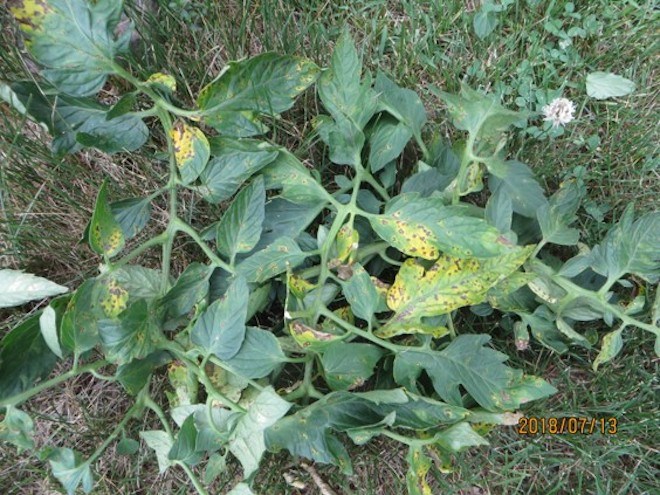Each week, Susan Richards of New North Greenhouses answers your gardening questions. Have questions about your gardening needs? Please email her at [email protected]
Henry: I have a problem with my tomato plants… It starts with the bottom leaves and works its way up. What is it and how and with what can I treat this problem?
Your problem is a common fungal disease called ‘early blight’. This disease is found in soil but can also over-winter on tools. It affects lower mature leaves first and then moves upwards on the plant. Affected leaves turn yellow, wither and die. This blight was particularly bad last year as we had such a wet summer. High temperatures and wet, humid conditions promote rapid disease spread.
Plants under stress from lack of nutrients are often the first affected so be sure to fertilize your tomato plants now.
Prune off infected leaves and thin out foliage to improve air circulation. Disinfect pruning tools after each cut with a solution of one part bleach to four parts water. Then spray plants with a copper sulphate fungicide. Repeat the application every seven to 10 days until you have things under control.
Change watering practices so leaves stay dry and water doesn't splash up onto the leaves from the soil. A layer of mulch can help.
In fall, discard all plant material. Don't put it in your compost pile!
Next growing season, plant tomatoes in a different location and spray fungicide early to prevent the fungus from taking hold.
Donna: My petunia basket has becoming really leggy and unattractive. Will I kill it if I cut it back?
Absolutely not! Petunias that are typically grown in hanging baskets are vigorous growers that require lots of water and LOTS of fertilizer. After all, you demand that they bloom continuously and they will if adequately fed!
During this past heat wave you probably watered continuously but didn't give them enough fertilizer.
The solution for a long lanky growth is to prune one third to one half the length of the stems. Pruning will stimulate new growth, with fullness coming back to the basket. Cut in front of a spot where you see a new bud developing to ensure the basket looks nice.
Once pruned back, give the plant a good dose of water soluble fertilized and repeat every two weeks.
However, if the plant has filled the entire basket with roots, leaving no room for healthy re-growth, you are better to transplant it into a larger container after pruning back. You will end up with a lush, healthy plant that will keep blooming right into the fall.
